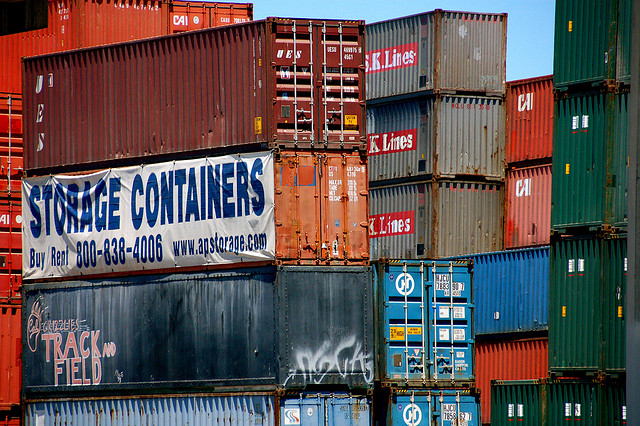
Environmental problems create especially heavy burdens for poor and minority communities. As three decades of research have shown, these communities host a disproportionate number of landfills, contaminated properties, incinerators, and other polluting facilities, many of which can cause serious health problems. Epidemiological research on health risks reveals that low-income and minority groups have higher rates of asthma, impaired lung function and other respiratory ailments as well as cardiovascular disease. All of these adverse health conditions are caused or exacerbated by exposure to pollution. Underprivileged communities can also be at greater risk from severe weather developments, which are expected to increase with climate change.
The Pursuit of Environmental Justice
Environmental justice has been on the federal government’s agenda now for twenty years, in no small measure due to effective advocacy by grassroots organizations and scholar-activists who have pushed since the 1980s for fairness in environmental protection. The federal government responded with new policy mandates, administrative reorganization, research and data collection programs, enhanced outreach and efforts to build community capacity – and, most notably, with a presidential executive order on environmental justice. Signed by President Bill Clinton on February 11, 1994, Executive Order 12898 called on each federal agency to “make achieving environmental justice part of its mission by identifying and addressing as appropriate, disproportionately high and adverse human health or environmental effects of its programs, policies, and activities on minority populations and low-income populations.”
How Effective Have Federal Efforts Been?
Research I have carried out with an interdisciplinary team of environmental policy scholars includes the first systematic evaluation of the implementation of Clinton’s executive order and related federal environmental justice policies. Have these efforts worked? Unfortunately, my colleagues and I found that the federal government – in particular the U.S. Environmental Protection Agency, known as “the EPA” – has repeatedly and systematically failed to incorporate environmental justice considerations into core programs and decision-making. The following findings support this conclusion:• When writing permits for facilities it regulates, the EPA has not consistently considered environmental justice issues.
• EPA standards set to implement pollution controls under the Clean Air Act and Clean Water Act have only rarely considered the unequal impact of problems on different social groups.
• Although the EPA is now giving more attention to environmental justice in its economic analyses of proposed regulations, significant issues need resolution before this is routinized.
• Public participation in EPA decisions has widened under the 1994 Executive Order, but representatives of low-income and minority communities participate only occasionally.
• Since 1994, the EPA and state-level agencies have not increased regulatory enforcement against the most important sources of pollution in minority and low-income communities.
• U.S. courts have provided few legal opportunities for environmental justice advocates to correct bias in public decisions about the siting of potentially environmentally harmful facilities; and the EPA has not made aggressive use of statutes such as Title VI of the 1964 Civil Rights Act to mitigate disproportionate environmental burdens.
Beyond these overall conclusions, our research found common shortfalls across several areas of activity and decision-making by the Environmental Protection Agency:
• The EPA has been slow to develop clear ways to implement the goals of Executive Order 12898 – which, in turn, has hampered the incorporation of environmental justice considerations into permitting, standard-setting, enforcement, and other kinds of decision-making.
• By failing to coordinated environmental justice activities, the EPA has allowed huge variations in policy and effort among its own programmatic offices as well as among regional offices and state offices engaged in environmental regulation.
• Leadership at the EPA on environmental justice priorities has been uneven from one presidential administration to the next, undercutting any sustained effort.
Hope for the Future
Despite these discouraging conclusions, there is considerable cause for optimism about the future. Former Obama Administrator Lisa Jackson prioritized environmental justice during her time at the Environmental Protection Agency, and the issue has remained on the agency’s agenda under the leadership of current Administrator Gina McCarthy. For the first time in two decades, the EPA is taking significant new steps to translate Clinton’s Executive Order 12898 into future routines as part of its Plan EJ 2014 initiative. If consistently implemented, a number of new Agency policies and guidance directives could together create real momentum toward improving environmental conditions in minority and low-income communities. To expand these efforts, the EPA recently announced a new framework called the EJ 2020 Action Agenda.
Inequalities in environmental conditions – including unequal exposures to pollution risks – create especially knotty political, economic, and social questions for governments to address. Air pollution, fouled water, and severe weather hazards exacerbated by global warming – all are difficult enough to address in their own right, and the problems mount when inequities by income and race are evident. The task of minimizing let alone eliminating such inequalities is so challenging that it may never be fully accomplished. But when government is fully attentive to and thoughtful about the socially uneven impact of problems and solutions, it can come closer to realizing the democratic promise of furthering environmental protection for all.

 Research to Improve Policy: The Scholars Strategy Network seeks to improve public policy and strengthen democracy by organizing scholars working in America's colleges and universities. SSN's founding director is Theda Skocpol, Victor S. Thomas Professor of Government and Sociology at Harvard University.
Research to Improve Policy: The Scholars Strategy Network seeks to improve public policy and strengthen democracy by organizing scholars working in America's colleges and universities. SSN's founding director is Theda Skocpol, Victor S. Thomas Professor of Government and Sociology at Harvard University.